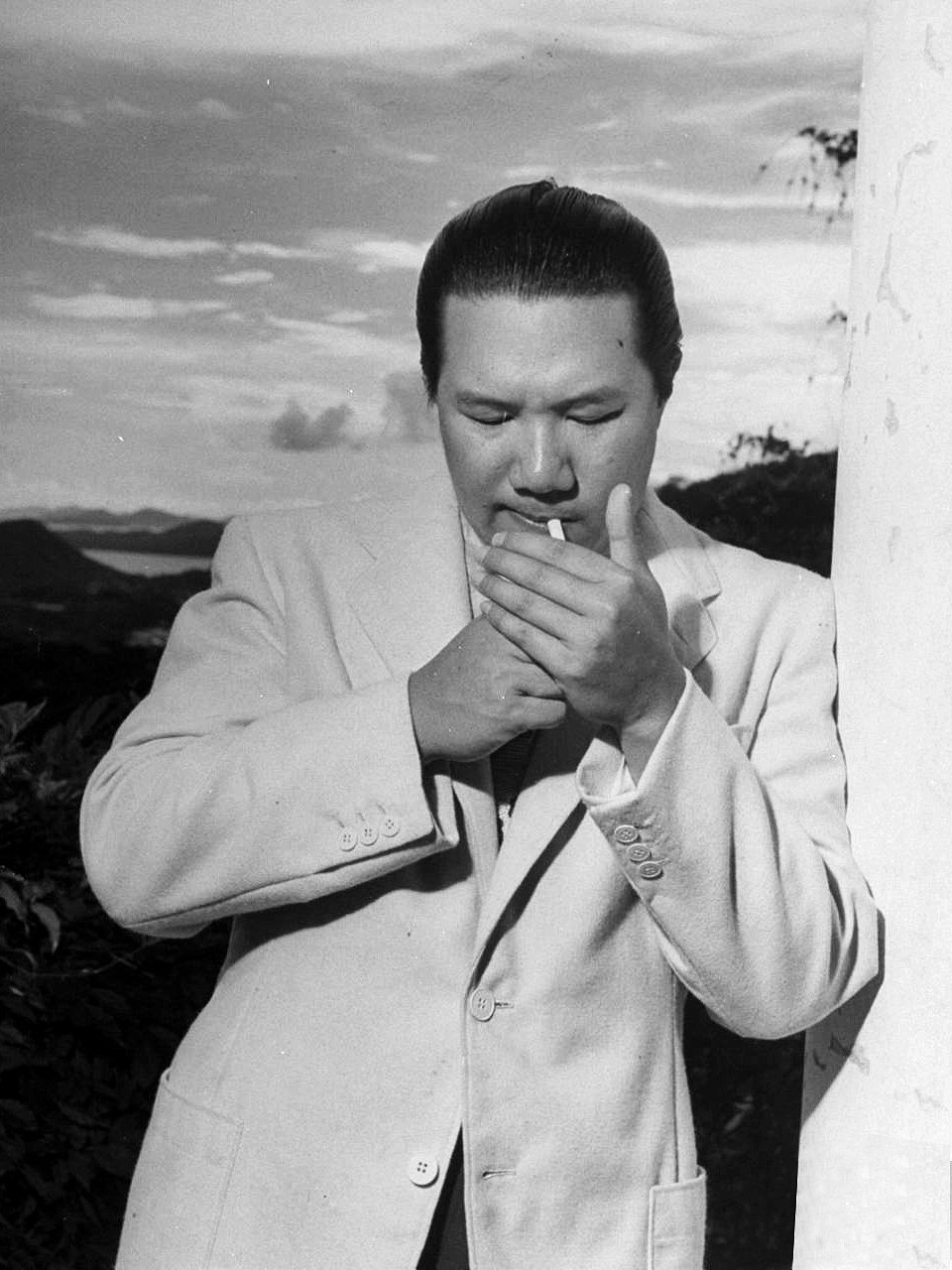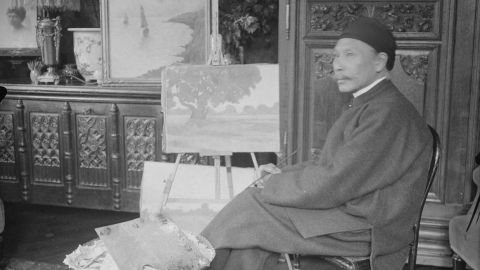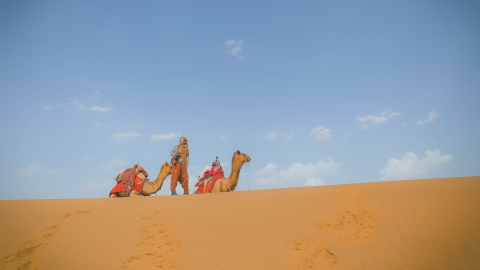"When I return to Vietnam to ascend the throne, I will do nothing but enjoy worldly pleasures."
Nguyen Phuc Vinh Thuy was the only son of King Khai Dinh, and was appointed Crown Prince at the age of 9. In June 1922, Vinh Thuy was adopted by the former Resident General of Central Vietnam, Jean François Eugène Charles and his wife, and studied in France. In 1925, King Khai Dinh passed away, and Vinh Thuy returned home to mourn. In January 1926, when he was only 12 years old, the Crown Prince was enthroned as the next Emperor, taking the reign name Bao Dai. In March of the same year, Bao Dai returned to France to continue his studies.
So during his youth and years of study, the number of times Bao Dai returned home could be counted on the fingers of one hand. He received Western education and culture and lifestyle until he was 19 years old.
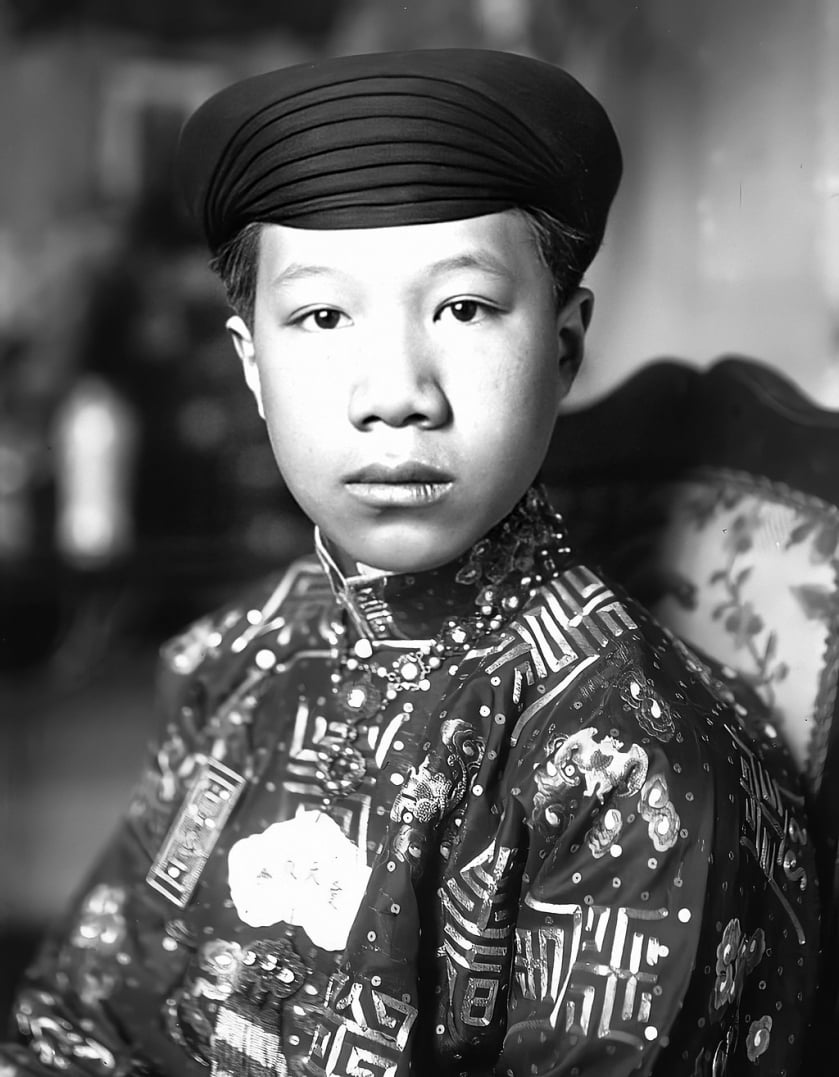
Bao Dai in Paris, 1926
"When I return to Vietnam to ascend the throne, I will do nothing but enjoy worldly pleasures."
That was one of the statements made by Crown Prince Vinh Thuy when he left France to continue "being king" of a country. True to his words, the last king of the Nguyen Dynasty was famous for his lavish lifestyle and notorious debauchery. He was proficient in many ways of enjoying himself: from dancing, golfing, car collecting to hunting, and of course, being a "fan" of traveling.
In September 1932, when Bao Dai returned from his studies in France, cars had only been in Vietnam for about 27 years, with prices that were certainly not affordable for everyone. With his huge fortune and lavish spending habits, the young king did not hesitate to spend money on his car collection. In his book “Bao Dai or the Last Days of the Kingdom of Annam” published in 2006, French author Daniel Grandclément compared the interests of King Louis XVI of France with the former Nguyen Dynasty emperor: “Louis XVI was fond of locks, while Bao Dai liked to tinker with car engines for hours”.
Bao Dai was the owner of a large Mercedes weighing 4 tons, with 3cm thick glass, bulletproof shell of 8mm submachine gun and machine gun; four limousines; a front-wheel drive Citroën; Ferrari and Bentley sports cars; and several other planes and yachts.

Bao Dai's Ferrari 250 GT Tour de France
All of these cars were used by the Emperor to visit and travel everywhere. Nguyen Huu Dao, the driver who took Bao Dai all over the country (and abroad) for 15 years, recounted a story that, "That day was March 9, Japan staged a coup against France, the country was in turmoil but the former emperor was still busy hunting in a forest in Khe Sanh, Huong Hoa district of Quang Tri province". The Japanese army invaded Hue but did not see the king, after knowing the story, they immediately sent someone to "take" him from Quang Tri to the ancient capital. However, the very next day, the king asked Mr. Dao to take him to Touranne (Da Nang) for a vacation.
Since then, using cars for long-distance travel and tourism has gradually become popular in Dai Nam. It can be said that the period when Bao Dai "spent a lot of time enjoying himself" was also the first milestone for the way of traveling by car in our country.

Emperor Bao Dai, photo taken in 1932 (Flickr/Agence Mondial)
"Most of the time, after a day of walking in the deep woods, I return to the hut, feeling refreshed by the silence of the forest."
Not only was Bao Dai passionate about cars, he also loved hunting. Almost every week and month, the king left the capital to seek entertainment in the remote mountains. One of his favorite places was the Central Highlands, where there were many animals and birds. The road from Hue to the highlands was long but there were few vehicles. Each time he traveled, the king often drove straight from Hue to Da Lat without stopping overnight.
In the Central Highlands, Bao Dai also established a large elephant field in the middle of Dak Lieng village, Lak district (now Lak town, Dak Lak province), as a place to graze his herd of hundreds of elephants. To satisfy his incomparable pleasures, Bao Dai had people build a resort villa on the top of a mountain overlooking Lak lake. This is a prime location to observe the vast Jun and Lien villages, or to enjoy the grand elephant parade performed by the most talented elephant riders in the Central Highlands. The old frangipani trees along the road to the villa today were also planted by Bao Dai in the past.
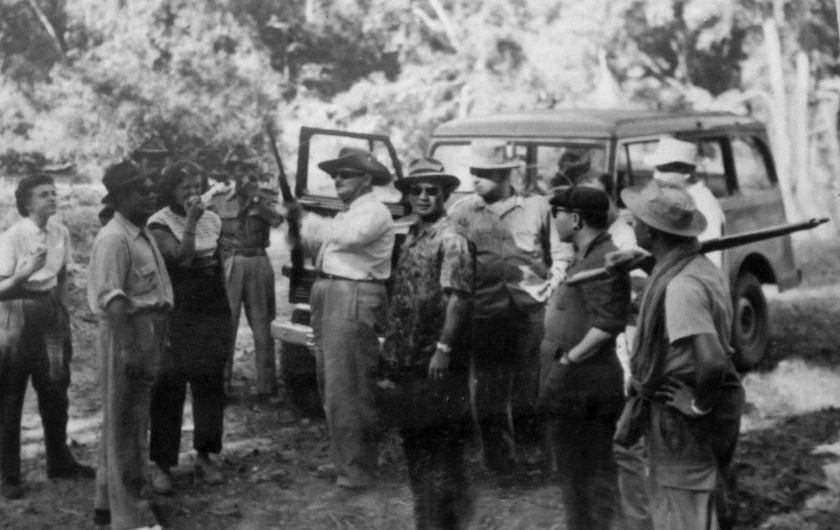
King Bao Dai (standing in the middle, wearing a short-sleeved shirt) on a hunting trip in Buon Don
But, Quang Tri was Bao Dai’s hunting ground, the place he especially loved to come to rest. In his memoir “The Dragon of Annam”, Bao Dai wrote about his hunting ground in Quang Tri:
“There, I have a thousand acres of hills and forests south of Cam Lo. In the large forests, there are several winding streams of cool water, with all the wild animals of my country, elephants, tigers, buffalo, wild animals, deer, and wild boars. On that hill, there is a large stilt house with a balcony like all the stilt houses of the Highlanders.
[…] Standing on the balcony, looking out over the valley between the two hills, I could observe the movement of a herd of wild buffalo, a wild animal that is both beautiful and wonderful, but also very dangerous, many of which are up to two meters tall.”
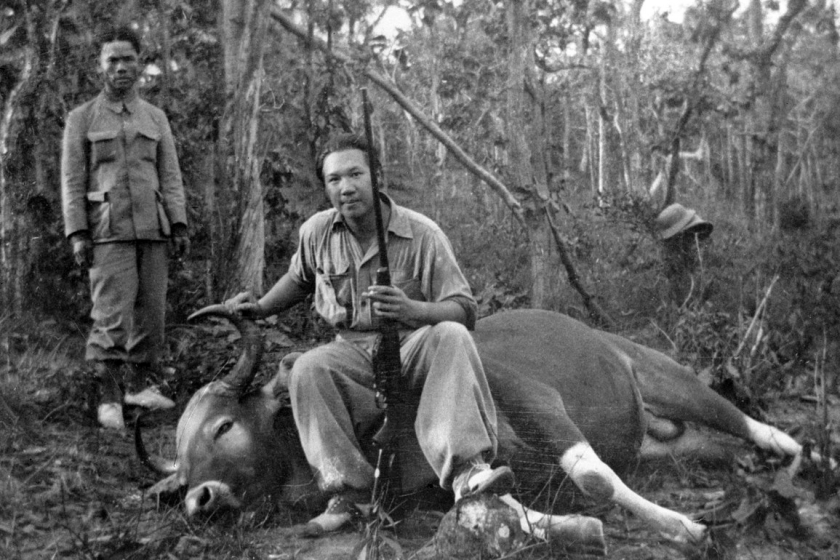
“To this day, I still enjoy the afternoons at the Quang Tri hunting camp. The Queen sometimes goes along. Occasionally, I have some friends join me. We spend the afternoons very openly in a friendly family atmosphere. But most of the time, after a day of walking in the deep forest, I return to the hut, feeling comfortable with the silence of the forest, after the sun has just set. Before the darkness falls, the sun goes to sleep, there is a chorus of numbing lamentations of insects, like worms and crickets singing in unison to praise the day gone by. Then there is complete silence. The presence of the land, as if there is only the damp scent of forest trees and moss before the endless mist...”
And so, Bao Dai - the Emperor who was pinned down with the image of a playboy and extravagant king - turned out to be a man who loved the mountains and forests, and longed for the serenity of immersing himself in nature.
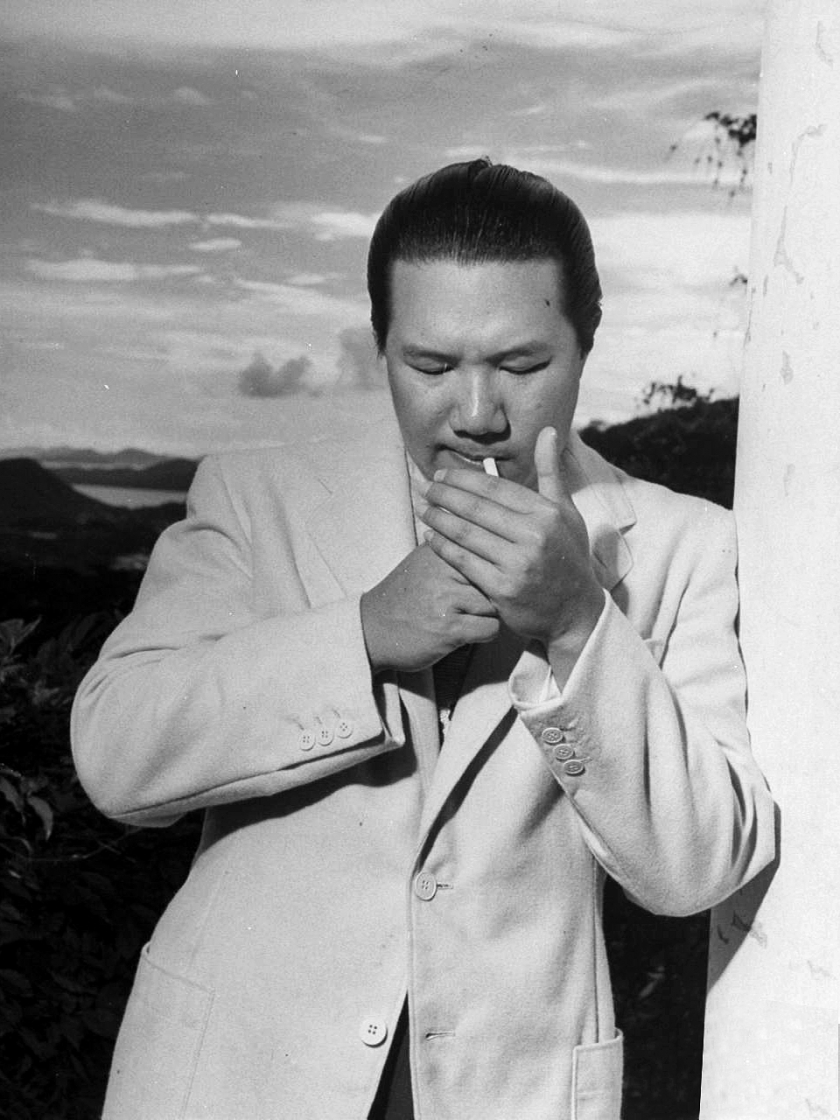
Bao Dai in a photo series in LIFE magazine (1948)

Bao Dai in a photo series in LIFE magazine (1948)
"In my walks, solitude is what suits my soul"
In addition to the properties in Hue Capital, Bao Dai also had many villas and residences spread across the three regions of North, Central and South. Wherever he went, this former emperor always prioritized enjoyment and luxury living. What is special is that these residences are all located in locations and pieces of land that now, when Vietnamese people of later generations come to visit, everyone can easily exclaim:couldn't be more ideal.
In the South, Bao Dai had the White Palace located on the side of a large mountain in Vung Tau city. With the "back to the mountain, facing the water" position, the White Palace not only had a beautiful and romantic view of the sea but also had great significance in terms of feng shui. In 1934, the "White Villa" (Villa Blanche) originally built for the French Governor General was transferred to be a resort for Bao Dai and Queen Nam Phuong. Most of the White Palace walls were painted white, combined with arched doors and tiled roofs, creating a luxurious, elegant beauty and classical art of the 19th - 20th centuries.
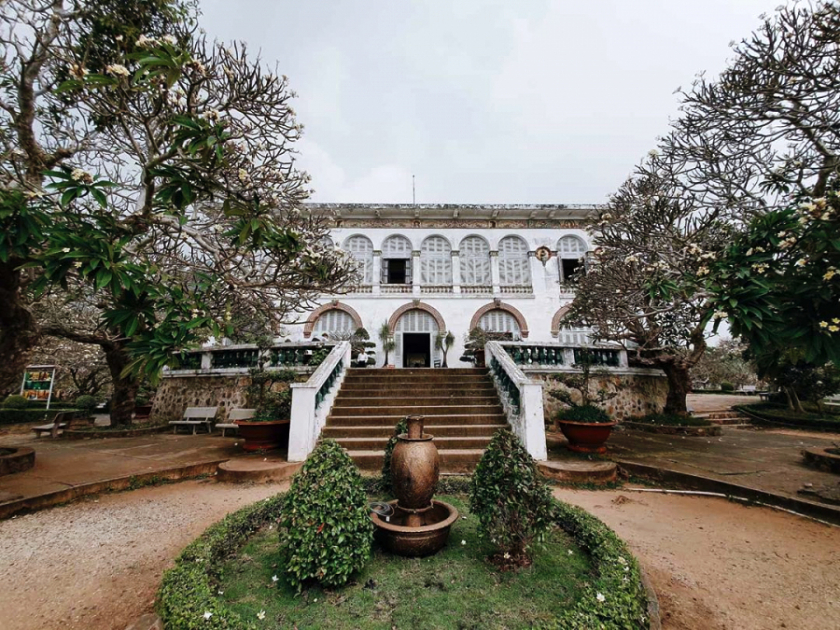
White Palace
In the Central region, there are 5 buildings named after Bao Dai: Dinh I - II - III Bao Dai in Da Lat, Bao Dai Palace in Dak Lak and Bao Dai Palace in Nha Trang. Da Lat is the place that holds many memories of Bao Dai, this is also the place where he first met Nguyen Huu Thi Lan - the only woman to be crowned Queen of the Nguyen Dynasty. Dinh I, Dinh II and Dinh III are all located on high pine hills, with a cool and poetic green space, bearing the romantic features typical of the foggy city.
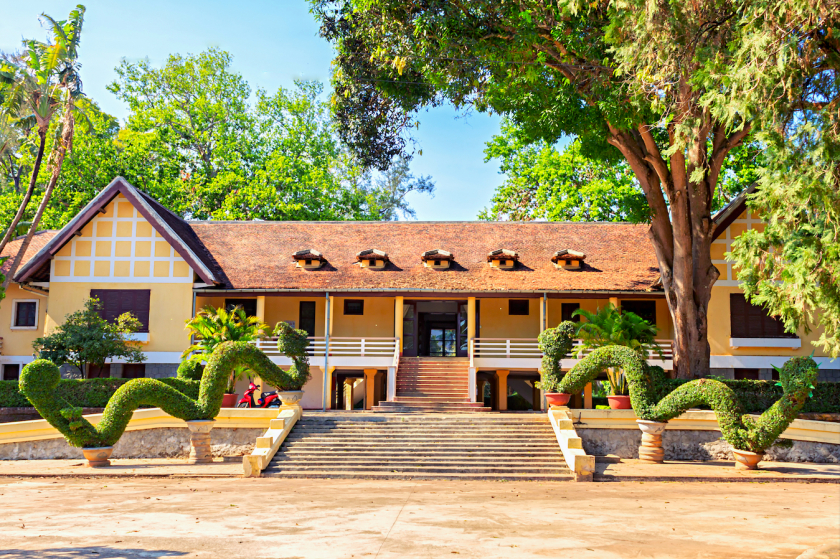
Bao Dai Palace
The three mansions above, along with Bao Dai Palace, are all located in the city center, on prime “golden land” positions. Bao Dai Palace is only 6 km south of Nha Trang center, a complex of 5 of the most beautiful villas in Vietnam.
Bao Dai Villa in Do Son (Hai Phong) is the only palace of the Nguyen Dynasty in the North. This villa is located on Vung Hill, built in 1928, and was given to King Bao Dai by Governor General of Indochina Pafquiere in 1949. Every time he went on a tour of the North, the King and Queen almost always chose this place to work, receive guests and as a resort for the whole family. Standing here, you can see the whole Do Son peninsula and let your eyes follow the immense ocean waves to the horizon. The climate of this land is also very mild and cool, suitable for rest and relaxation.
In addition, few people know that Bao Dai also had two luxurious old French villas in Hanoi: one on Ngoc Ha Street (Ba Dinh) and the other on Tran Hung Dao Street (Hoan Kiem). In 1945, after abdicating, Bao Dai lived here for a short time.
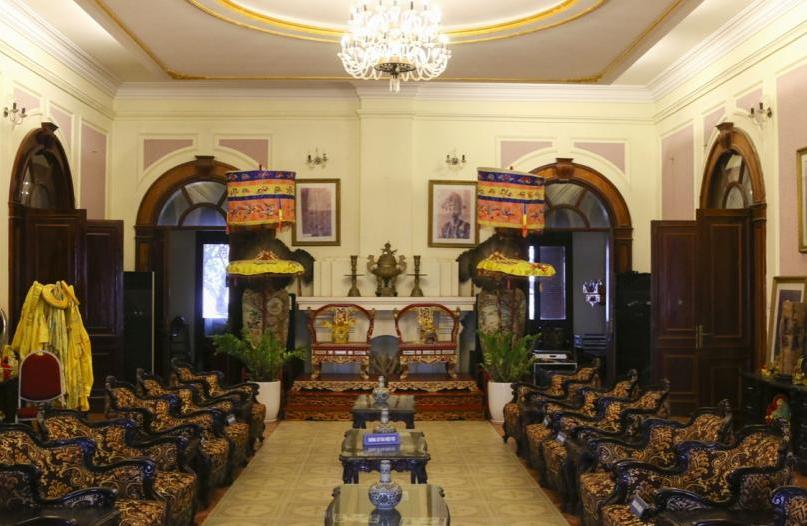
Inside Bao Dai Villa in Do Son
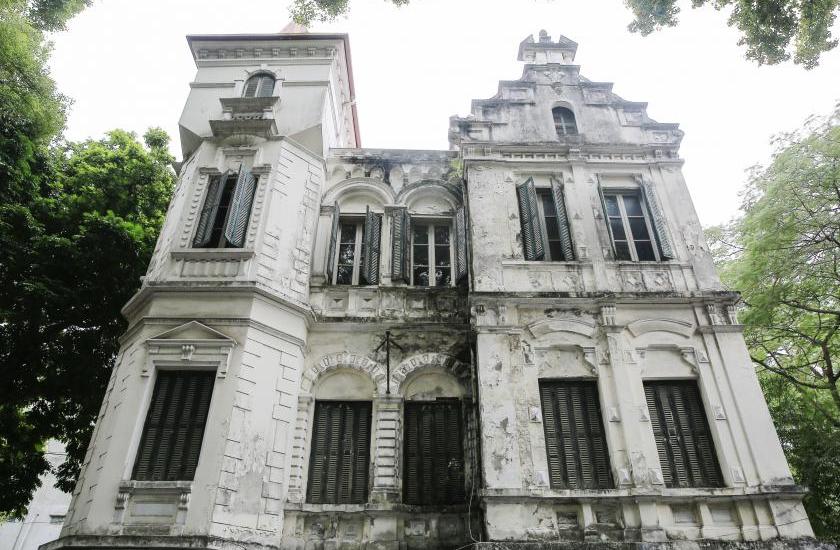
The old French villa on Tran Hung Dao street of King Bao Dai
Of course, Bao Dai did not only visit the above places, he also traveled and embraced countless other love affairs with many other lands of Vietnam. Perhaps Bao Dai did not diligently study how to govern the country, but he diligently traveled, to "discover the beauty of the suburban areas", or "to Buon Me Thuot, where there was a house next to a lake located on a high mountain, which used to be a volcano crater".
As he himself said,"Very often I would go away like this, and only return late at night. In these walks, the solitude suited my lonely soul."





